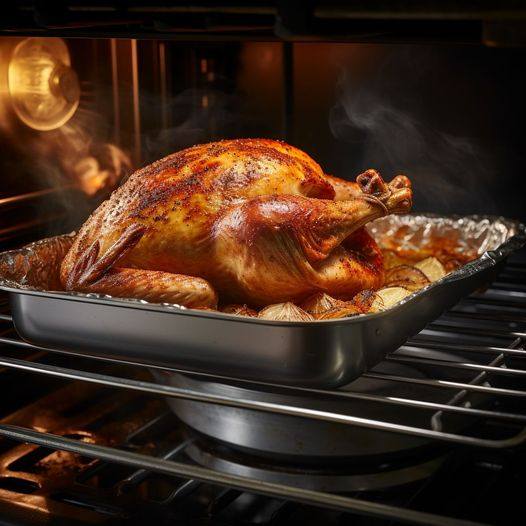ADVERTISEMENT
Should You Add Water to the Turkey Pan While It’s Roasting?
Roasting a turkey is a tradition for many during holidays and special occasions, but when it comes to achieving the perfect roast, there’s often debate over the best methods. One common question that arises is whether or not to add water to the turkey pan while it’s roasting. The answer, like many aspects of cooking, depends on your goals and what you’re aiming to achieve with your turkey.
In this article, we’ll break down the pros and cons of adding water to your turkey pan and explore alternatives to help you decide what’s best for your next roast.
Why Some People Add Water to the Turkey Pan
Adding water to the pan while roasting a turkey is a common practice in many kitchens. There are a few reasons why cooks might choose this method:
- Moisture Retention: The primary reason for adding water is to help maintain moisture in the turkey during the long roasting process. The water in the bottom of the pan creates steam, which can help keep the bird from drying out, especially for longer cooking times.
- Basting Liquid: Some people add water to help create a base for making gravy. The liquid in the pan is often used to baste the turkey, adding flavor and helping to keep the skin moist as it roasts.
- Even Heat Distribution: Water in the pan can also help evenly distribute heat around the turkey, especially if you’re using a large roasting pan. This can ensure a more consistent cooking temperature and prevent the turkey from drying out on the bottom.
The Cons of Adding Water to the Turkey Pan
While adding water can help with moisture, there are also some potential downsides:
- Soggy Skin: One of the most common complaints about adding water to the turkey pan is that it can result in soggy skin. The steam generated by the water can prevent the skin from becoming crispy and golden brown, which is a hallmark of a perfectly roasted turkey.
- Less Flavorful Drippings: Another downside is that adding water dilutes the drippings in the pan. These drippings are crucial for making rich, flavorful gravy. If there’s too much water in the pan, you may end up with a bland base for your gravy, and you might lose out on the full flavor from the turkey itself.
- Longer Cooking Time: While steam can keep the bird moist, it can also prevent the turkey from reaching the ideal crispy texture and may cause it to cook more slowly, as the moisture can create a barrier for heat to penetrate the meat.
Alternatives to Adding Water to the Turkey Pan
If you’re hesitant about adding water but still want to ensure a juicy turkey, there are several alternatives to consider:
1. Roast on a Rack
Roasting your turkey on a rack elevates the bird above the bottom of the pan, which allows air to circulate around the entire bird. This method helps promote even cooking and crisp skin while also letting the turkey’s own juices collect in the pan for flavor-packed gravy. If you want to enhance moisture, you can still baste the bird with its own juices without adding water.
For Complete Cooking STEPS Please Head On Over To Next Page Or Open button (>) and don’t forget to SHARE with your Facebook friends
ADVERTISEMENT
ADVERTISEMENT
